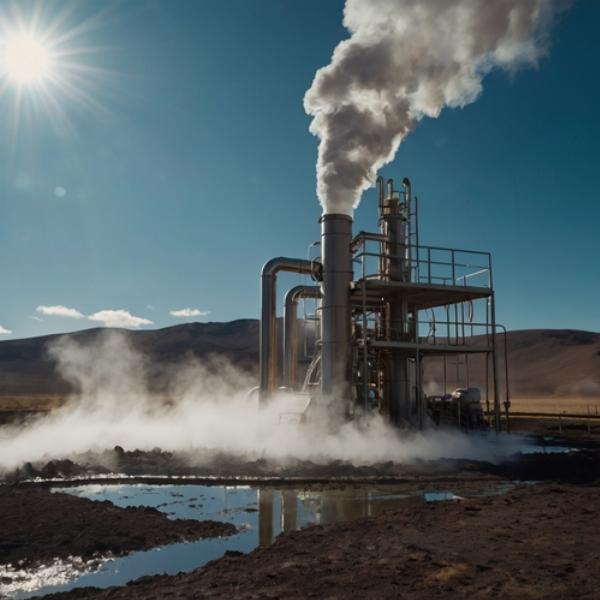Key Trends in Indonesia Geothermal Energy Market by 2031

Strong 8k brings an ultra-HD IPTV experience to your living room and your pocket.
Indonesia is gearing up for a renewable energy revolution, with geothermal energy playing a pivotal role. The Indonesia Geothermal Energy Market is forecasted to expand significantly by 2031, as the government and private investors focus on this abundant and renewable energy source. With the growing emphasis on sustainability and reducing carbon emissions, Indonesia is positioning itself to become a global leader in geothermal energy production.
Growth Drivers: Government Initiatives and Global Trends
Several key factors are driving the growth of Indonesia's geothermal sector. The government’s commitment to reducing reliance on coal-fired power plants is one of the primary reasons for the shift towards geothermal energy. Through policies like the National Energy Plan (RUEN) and initiatives such as the feed-in tariff for geothermal projects, the government is actively promoting renewable energy development. These incentives aim to make geothermal power more cost-competitive and attractive to investors.
Additionally, the global transition to renewable energy is another critical factor. International pressure to reduce greenhouse gas emissions has accelerated the development of green technologies, and geothermal energy is viewed as a reliable and stable alternative to fossil fuels. With geothermal plants able to produce power continuously, unlike solar or wind farms, they provide a base load solution for Indonesia’s growing energy needs.
Infrastructure Development and Technological Advancements
One of the most significant trends expected in Indonesia’s geothermal energy market by 2031 is the advancement in infrastructure and technology. Geothermal projects are capital-intensive and require substantial investments in exploration and drilling. However, as technology improves, the costs associated with geothermal energy production are expected to decline. Innovations in drilling techniques and enhanced geothermal systems (EGS) could make it easier and more efficient to tap into geothermal resources.
Moreover, new financing models, such as green bonds and blended finance, are likely to play a vital role in mitigating the financial risks associated with geothermal development. International organizations and foreign governments are increasingly showing interest in financing renewable energy projects in Indonesia, which could open doors for further investments in the geothermal sector.
Environmental and Social Benefits
Geothermal energy is a crucial part of Indonesia’s strategy to combat climate change. Unlike coal, geothermal energy produces minimal greenhouse gas emissions, making it an environmentally friendly option. In addition to reducing Indonesia’s carbon footprint, geothermal plants can provide energy security for remote areas that are difficult to connect to the national grid.
Moreover, geothermal development often leads to local community benefits. Geothermal power plants create jobs in both the construction and operational phases, providing much-needed economic opportunities in rural areas. However, it’s essential to ensure that geothermal development is done sustainably, considering the potential environmental impact on nearby ecosystems.
Challenges: High Initial Costs and Land Access Issues
Despite its potential, the geothermal sector in Indonesia faces significant challenges. High upfront costs and lengthy project timelines remain obstacles to faster growth. It can take several years and considerable investment to develop a geothermal power plant from the exploration phase to actual power production. These challenges are exacerbated by difficulties in securing land rights and dealing with local community concerns.
In response, the government is working on simplifying regulations and improving the licensing process to facilitate faster geothermal development. Moreover, collaborations between government, private firms, and international partners are being encouraged to tackle these challenges.
Future Outlook
By 2031, Indonesia’s geothermal energy capacity is expected to grow substantially, contributing to a more sustainable energy mix. The market is likely to see increased investments from both domestic and international players, driven by favorable government policies and the growing need for renewable energy sources. If Indonesia can overcome the challenges of high development costs and regulatory complexities, the country could potentially double its geothermal output by 2031.
Conclusion
The Indonesia Geothermal Energy Market is on the cusp of transformative growth, driven by government policies, technological advancements, and global trends toward renewable energy. While challenges remain, the long-term outlook is positive, and Indonesia is well-positioned to become a leader in geothermal energy production by 2031.
Note: IndiBlogHub features both user-submitted and editorial content. We do not verify third-party contributions. Read our Disclaimer and Privacy Policyfor details.


